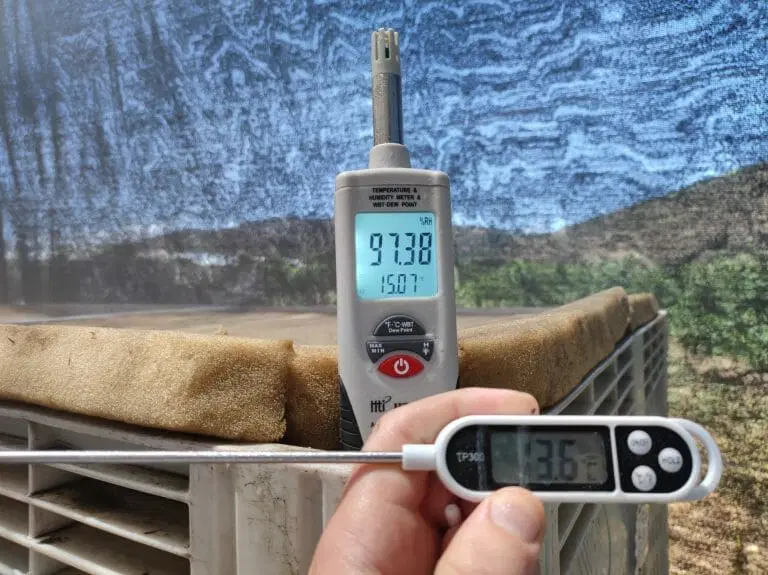Postharvest is the process that begins from the moment the cherry is separated from the plant and extends until it reaches the final consumer. For exported cherries, several stages occur during this journey, in which it is common to encounter practices and handling techniques that have become commonplace but often lack clear foundations. Few people know the reasons behind them or their actual effect on cherries.
Every handling practice should be based on data, assessments, and justifications for its implementation. From decisions related to harvest timing, the use of covers in storage bins, the choice of truck for transportation, to specific actions like wetting the floor in cold storage rooms, all should be supported by reasons based on measurements and evaluations of the variables involved.
Let’s take harvest timing as an example. For this task, the moment that minimizes fruit dehydration and avoids high temperatures in the pulp should be chosen. Therefore, the earlier the harvest begins, the better the results will be. However, the harvest end time can vary considerably, as each orchard has its own justifications and realities. It is advisable to conduct specific evaluations in each orchard to determine the optimal harvest times based on the vapor pressure deficit (VPD) as an indicator of the dehydrating capacity of the environment. A study conducted by our R&D team during the 2021-2022 season in a cherry orchard in El Abra, O’Higgins Region (Chile), identified that the highest VPD levels were observed between 12:30 PM and 8:00 PM (Figure 1). Within this range, VPD exceeded 2 kPa, with a peak near 3 kPa between 3:00 PM and 6:00 PM. This evaluation should be essential in orchards when defining the harvest end time.

Figure 1. Vapor pressure deficit (VPD) evolution throughout the day in a cherry orchard during harvest season.
Another example is the use of Raschel nets, commonly used as shading devices. It is important to understand the effect these nets have on the fruit underneath them. However, there are different percentages of shading in the nets, which will affect the fruit differently. In collaboration with our R&D team, we conducted a trial that evaluated the effect of Raschel nets on temperature and relative humidity in a fruit collection center in the field. The results (Table 1) revealed that when there were 32°C and 23% relative humidity under direct sunlight, covering the collection center with an 80% shading Raschel net reduced the air temperature to 29°C and increased the relative humidity to 29%. Using a double layer of this net further decreased the temperature to 26°C and increased the relative humidity to 45%. When combined with a humidification system, the air temperature dropped to 21°C, and the relative humidity was raised to 74%.

A third example is the use of wet sponges on the bins during truck transportation from the field to the processing plant. Although wet sponges are highly effective in protecting the fruit from dehydration and temperature increase while inside the bins in the interrow of the orchard, their impact during truck transportation becomes insignificant if an appropriate truck is used. In this case, it is sufficient to ensure that the transportation is carried out in a refrigerated truck and that the temperature is adjusted to achieve a minimal vapor pressure deficit.
These examples illustrate the need for measurements and evaluations to understand the real effect of practices and handling techniques used during cherry postharvest. Based on the above, we can conclude that every action taken during the postharvest process should be supported by concrete data that enables informed decisions, always for the benefit of the fruit.









